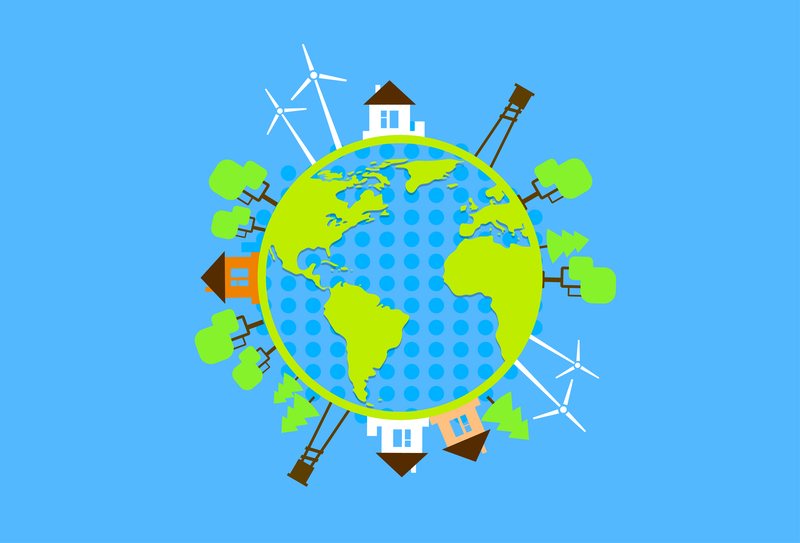Driven Solutions to End Microplastic Pollution
Microplastic pollution is an increasingly pressing environmental issue. These tiny plastic particles, often less than five millimeters in diameter, have infiltrated our oceans, rivers, and even the food chain. Driven by a commitment to sustainability, industries, researchers, and governmental bodies are seeking effective solutions to combat this growing problem. This article explores innovative strategies and driven solutions aimed at eradicating microplastic pollution.
The Gravity of Microplastic Pollution
Microplastics enter the environment through a variety of channels, including the decomposition of larger plastic debris, industrial processes, and even everyday activities such as washing synthetic clothing. Their minuscule size allows them to permeate natural ecosystems, making it challenging to track and remove them effectively.
Impacts of Microplastic Pollution:
- Environmental Harm: Microplastics have been found in marine environments, freshwater systems, and terrestrial habitats, affecting wildlife that ingest these toxic particles.
- Human Health Risks: As microplastics enter the food chain and potable water supplies, concerns are mounting regarding potential human health impacts.
- Economic Implications: The costs associated with cleaning up plastic pollution and addressing health impacts are substantial.

Innovative and Driven Solutions to Combat Microplastic Pollution
1. Enhancing Waste Management Practices
- Improve Recycling Systems: Establish efficient recycling infrastructure to minimize plastic waste entering the environment.
- Develop Biodegradable Alternatives: Encourage the production and use of biodegradable plastics to replace conventional ones.
- Tighten Littering Regulations: Enforce stricter regulations on waste disposal practices across industry and households.
2. Technological Innovations
- Advanced Filtration Systems: Implement filtration technologies in wastewater treatment plants to capture and remove microplastics before they reach natural water bodies.
- Nanotechnology Solutions: Invest in nanotechnology to break down microplastics into harmless components.
- Artificial Intelligence (AI): Use AI to track and predict the movement of microplastic particles, aiding clean-up and prevention efforts.
3. Consumer Awareness and Behavioral Change
Educating the public about the environmental impact of microplastics is crucial in fostering behavioral changes that can significantly reduce pollution.
- Promote Sustainable Practices: Encourage consumers to choose products with minimal plastic packaging and promote the use of reusable items.
- Educational Campaigns: Launch awareness programs highlighting the importance of reducing plastic use and implementing proper waste sorting.
- Incentivize Eco-Friendly Products: Support retailers that advocate for and stock eco-friendly products to drive market demand toward sustainability.
4. Legislative Measures and Global Cooperation
Strong policies and international collaborations are critical to addressing microplastic pollution on a global scale.
- International Treaties: Enhance global cooperation through treaties focused on reducing plastic waste and promoting sustainable practices.
- National Legislation: Implement policies that limit plastic production and enhance waste management systems.
- Research and Development Funding: Allocate resources to research initiatives focused on understanding and eradicating microplastics.

Success Stories and Case Studies
Several regions and organizations have already demonstrated the effectiveness of driven solutions to combat microplastic pollution. Notable examples include:
- Netherlands' State-of-the-Art Sewage Treatment: This project enhances the removal of microplastics from wastewater using innovative filtration techniques.
- Canada's Microbead Ban: Canada has imposed a ban on plastic microbeads, a primary contributor to microplastic pollution in water bodies.
- The Ocean Cleanup Initiatives: This organization has engineered systems to remove plastics from oceans, targeting both surface litter and submillimeter pollutants.
Looking to the Future: Driving Change
To effectively address microplastic pollution, a collaborative effort is necessary, combining innovation, consumer behavior, legislation, and international cooperation. The progress made thus far is promising, yet continuous commitment and adaptation are required to drive ongoing change.
As we move forward, it is imperative for individuals, companies, and governments alike to remain vigilant and proactive. By leveraging innovative solutions and fostering a sustainable mindset, microplastic pollution can be greatly reduced, paving the way for a cleaner, healthier planet.
Keywords: microplastic pollution, plastic waste management, technological innovation, consumer awareness, legislative measures, biodegradable alternatives, environmental impact